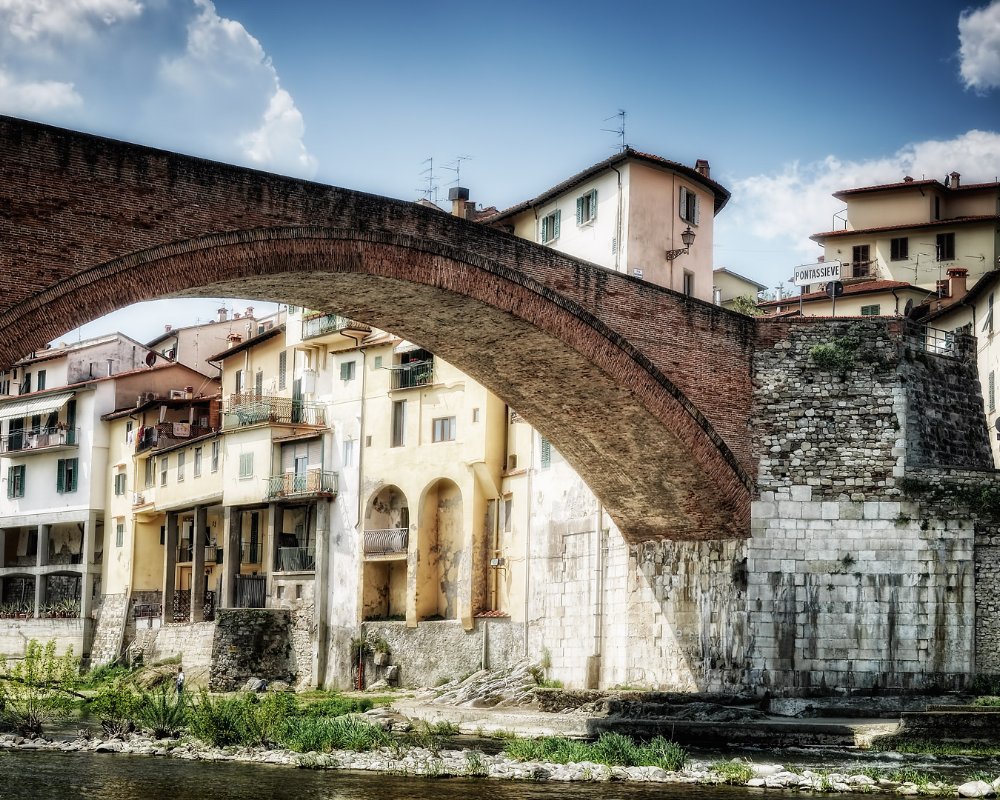There’s no more nostalgic walk in Pontassieve than from via Palagi to Pievecchia
There’s no more nostalgic walk in Pontassieve than from via Palagi to Pievecchia. On June 8, 1944, the hushed hamlet of Pievecchia would never be the same again. It all began in via Palagi in Pontassieve, where a group of partisans burst into the military police barracks; their purpose was to seize arms. The freedom fighters started back to their base camp at Monte Giovi, passing by Pievecchia, chancing upon two Germans playing cards. The ensuing gunfight killed one of the German soldiers, while the other escaped, raising the alarm. An antiaircraft battalion immediately bombed Pievecchia to prevent the locals from fleeing to safety. A fascist contingent quickly drove up to the village to finish the bloody task. Today, the walk from Pontassieve to Pievecchia is a far cry from those distant horrors.
Start at Pontassieve’s town hall, home to the famous Sala delle Eroine. The Sansoni Trombetta family, who owned the building at that time, commissioned the Florentine artist Ferdinando Folchi to paint a fresco cycle depicting heroic gestures by women who lived in the sixteenth century. The room is now used to host chamber concerts and photography and art exhibitions, as too is the Sala delle Colonne, a vaulted space adjacent to the main municipal building.
Start at Pontassieve’s town hall, home to the famous Sala delle Eroine. The Sansoni Trombetta family, who owned the building at that time, commissioned the Florentine artist Ferdinando Folchi to paint a fresco cycle depicting heroic gestures by women who lived in the sixteenth century. The room is now used to host chamber concerts and photography and art exhibitions, as too is the Sala delle Colonne, a vaulted space adjacent to the main municipal building.
Turn left outside the town hall and walk down the street under the clock tower, which affords mesmerizing views over Pontassieve and the surrounding area on the rare occasions that guided tours are offered to the public. Also known as the Porta Aretina, the gate maintains most of its original fourteenth-century appearance. Continue down via Ghiberti, the main street lined with family-run shops and businesses. Pause to take in the view over the Sieve River from the striking double-arched Ponte Mediceo, whose origins date to the fourteenth century. Return to Pontassieve’s main street before forking left down Via Palagi, a quiet residential street that runs along the river.
Turn left outside the town hall and walk down the street under the clock tower, which affords mesmerizing views over Pontassieve and the surrounding area on the rare occasions that guided tours are offered to the public. Also known as the Porta Aretina, the gate maintains most of its original fourteenth-century appearance. Continue down via Ghiberti, the main street lined with family-run shops and businesses. Pause to take in the view over the Sieve River from the striking double-arched Ponte Mediceo, whose origins date to the fourteenth century. Return to Pontassieve’s main street before forking left down Via Palagi, a quiet residential street that runs along the river.
Just after the gushing weir, a left turn leads on to via di Grignano and up into the quietude of the countryside. The rural lane winds up at a gentle gradient of a natural gym. Olive trees dot the hillside, lavender scents the air and poppies punctuate the greenery, as if in memory of that fateful June day. After about 40 minutes, on the left a brown signpost points the way to Pievecchia “Eccidio nazifascista 8 giugno 1944” (Fascist Nazi massacre June 8, 1944). The street tightens and turns, the tower of the privately owned nineteenth-century villa beckons. At the narrowest bend in the road, sudden shade provides slender solace from the commemorative stones on the walls pockmarked with bullet holes.
Just after the gushing weir, a left turn leads on to via di Grignano and up into the quietude of the countryside. The rural lane winds up at a gentle gradient of a natural gym. Olive trees dot the hillside, lavender scents the air and poppies punctuate the greenery, as if in memory of that fateful June day. After about 40 minutes, on the left a brown signpost points the way to Pievecchia “Eccidio nazifascista 8 giugno 1944” (Fascist Nazi massacre June 8, 1944). The street tightens and turns, the tower of the privately owned nineteenth-century villa beckons. At the narrowest bend in the road, sudden shade provides slender solace from the commemorative stones on the walls pockmarked with bullet holes.
Return the same way or follow the signposts of the Sentiero della Memoria (or “Memory Way”) back to Pontassieve, which takes about 70 minutes. Head here for more information. Alternatively, continue walking along via di Grignano and visit the wineries of Grignano (a 25 minute walk from Pievecchia) and Fattoria Lavacchio, also a restaurant and farm shop (an hour’s walk from Pievecchia).
Return the same way or follow the signposts of the Sentiero della Memoria (or “Memory Way”) back to Pontassieve, which takes about 70 minutes. Head here for more information. Alternatively, continue walking along via di Grignano and visit the wineries of Grignano (a 25 minute walk from Pievecchia) and Fattoria Lavacchio, also a restaurant and farm shop (an hour’s walk from Pievecchia).


